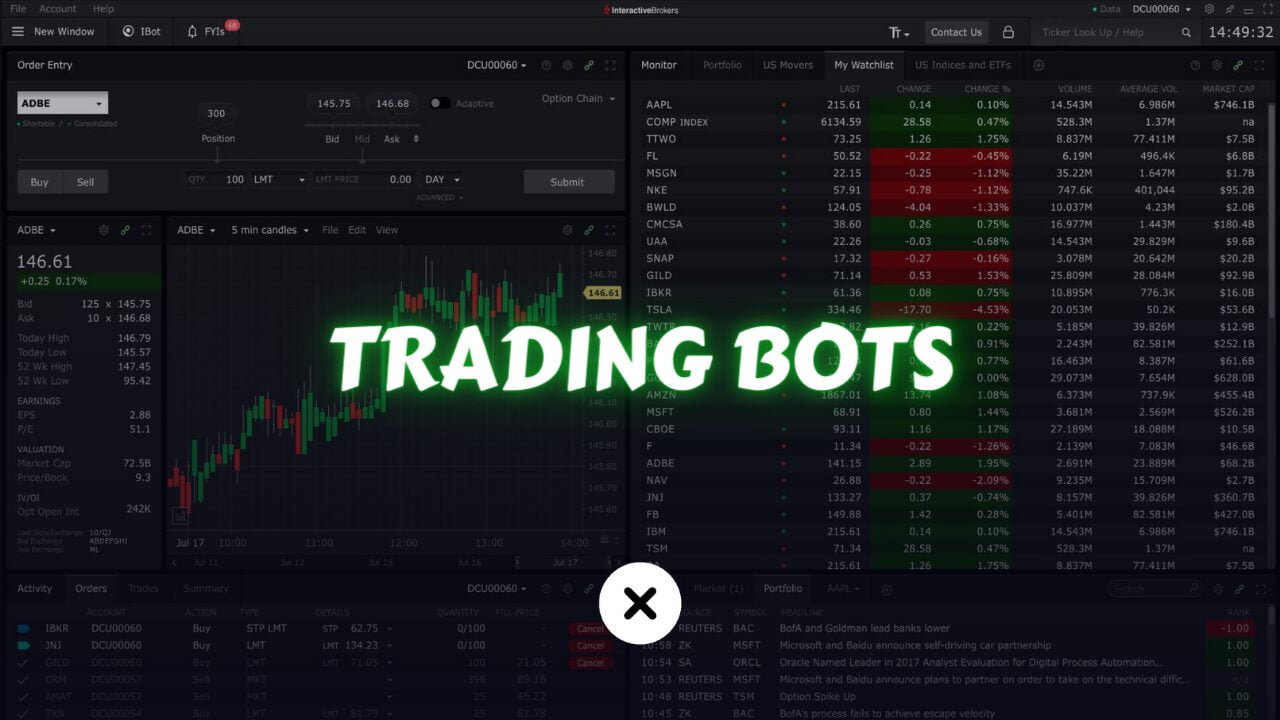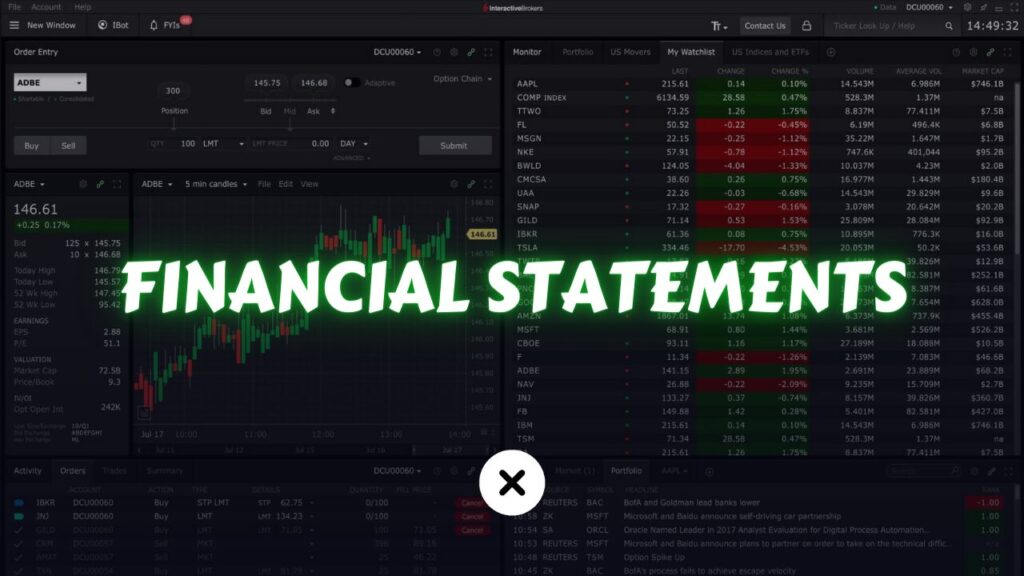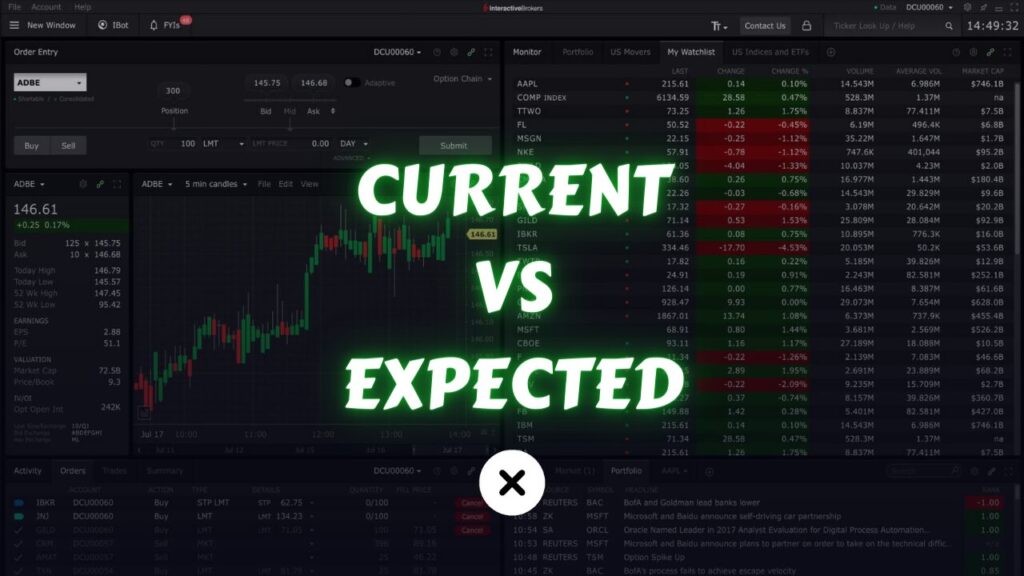
To answer the question, “Are trading bots profitable?” we first need to understand how trading works.
How Trading Works?
The fundamental principle of trading involves the exchange of assets between two parties, with the aim of making a profit. This process can happen in various markets, including stocks, bonds, currencies, commodities, and even digital assets like cryptocurrencies.
Here’s a breakdown of how trading typically works:
1. Ordering:
- Bid: This is the price a buyer is willing to pay for an asset.
- Ask: This is the price a seller is willing to accept for an asset.
- Order types: Different types of orders can be placed, such as market orders (executed at the best available price) or limit orders (executed only at a specific price or better).
2. Execution:
- Matching: When a bid and ask price match, a trade is executed.
- Market makers: In some markets, market makers facilitate trade by providing liquidity and ensuring bid and ask prices are readily available.
- Order book: Tracks all outstanding bids and asks for a specific asset.
3. Settlement:
- Clearing and settlement: After a trade is executed, the transaction must be cleared and settled, ensuring the transfer of ownership and payment.
- Brokers and exchanges: Brokers act as intermediaries between traders and markets, facilitating order placement and execution. Exchanges provide the platform for matching buyers and sellers.
4. Profit and Loss:
- Price fluctuations: The value of an asset can fluctuate over time. If the price increases after you buy an asset, you can sell it for a profit. Conversely, if the price decreases, you will incur a loss.
- Fees and commissions: Brokers and exchanges typically charge fees and commissions for their services. These costs can impact your overall profitability.
So as you can understand, you need to hold the right asset at the right time and have to get rid of it at the right time too in order to make money in trading.
And the only way to do that is by having a solid trading strategy. there is no other way to consistently make money in trading without having a strategy.
Creating a good strategy is hard, and not every strategy works all the time. When the market changes, strategies might not work as well as they did before. So, you need to be adaptable, keep researching, and either develop new strategies or adjust existing ones to stay profitable.
What are Trading Bots?
Trading bots are automated software programs that execute trades on your behalf based on predefined parameters and strategies. They can operate in various markets, including stocks, cryptocurrencies, and forex.
Instead of you handling the trading strategy mentioned earlier, you let the software handle it. Remember, a bot is just a tool; the strategy is what makes money. It requires adjustments from time to time. So, no matter how good a trading bot is, it needs a human touch occasionally to generate profits.
Many folks in algorithmic trading create their own bots using frameworks like TWS API, freqtrede, MQL5 and cTrader Automate. These are just a few examples; there are plenty more options, or you can even build one from the ground up if you have the time and resources. Alternatively, you can hire someone to develop one based on your strategy. So, the strategy is the crucial element here.
These bots can offer several advantages:
- Automation: Trading bots can remove human emotions from the decision-making process, leading to more disciplined and consistent trading.
- Speed: Bots can react to market changes much faster than humans, potentially capturing profitable opportunities.
- 24/7 Trading: Bots can trade around the clock, taking advantage of market movements even when you’re not available.
However, there are also potential downsides to using trading bots:
- Technical Difficulties: Bots can malfunction or encounter technical issues that lead to losses.
- Overreliance: Bots can create a false sense of security, leading traders to neglect essential risk management practices.
- Limited Adaptability: Bots may struggle to adapt to changing market conditions, leading to losses in volatile markets.
Are Trading Bots Profitable?
Trading bots have become a popular tool in recent years, promising to automate the trading process and generate consistent profits. But are these bots actually profitable? The answer is not a simple yes or no, as it depends on several factors.
Like I mentioned earlier, if the strategy is good and works well in the current market, it can make money. If the strategy isn’t effective, the bot won’t perform. So, it all comes down to the strategy.
What are the Factors Affecting the Profitability of Trading Bots?
- Trading Strategy: The underlying trading strategy used by the bot is crucial. Successful strategies require backtesting and thorough evaluation before deployment.
- Market Conditions: Market volatility and liquidity can significantly impact bot performance. Certain strategies might be more effective in specific market conditions.
- Fees: Trading bots often come with fees, which can eat into profits. Analyzing the fees associated with the bot is essential before using it.
- Risk Management: Implementing proper risk management strategies, such as stop-loss orders and position sizing, is crucial to mitigate potential losses.
- Human Oversight: While bots can automate trading, human oversight remains essential. Monitoring bot performance and adapting strategies as needed is vital for success.
- Latency: Latency is big factor when it comes to high frequency trading, if your bot is not speed enough to execute trades then its gonna fail the strategy.
Can Trading Bots Guarantee Profitability?
Unfortunately, no trading bot guarantees profitability. Even the most sophisticated bots can experience losses due to unforeseen market events or unforeseen technical issues. The profitability of a trading bot ultimately depends on the factors mentioned above, including the chosen strategy, market conditions, and proper risk management.
I also want to point out something important. Consider this: if a trading bot is truly effective and consistently making money, why would its creators sell it? Wouldn’t they just rely on the bot to generate income from trading? The reason is simple—it won’t work that way. While a bot might have worked at some point, it’s not a long-term solution. You can try getting these bots and tweaking them, but the profitability is not guaranteed, and it’s not worth paying for when the underlying strategy is often available for free online. one of the free website is forexcracked.com and you can just google to find strategies.
Nowadays, tools like ChatGPT, Bard, make it easy to build bots without coding knowledge of course you need to make some tweaks to it. So, the key takeaway is that buying a bot with someone else’s strategy won’t likely work in the long run. It’s better to build and monitor your own bot for a better understanding and control.
Conclusion
Trading bots can be a valuable tool for experienced traders, but they are not a magic bullet for guaranteed profits. Before using a trading bot, it’s crucial to understand its limitations, thoroughly backtest and evaluate its strategy, and implement proper risk management practices.
Here are some additional tips for maximizing the potential profitability of trading bots:
- Start small and scale gradually. Don’t invest all your capital into bot trading initially. Start with a small amount and gradually increase your investment as you gain confidence.
- Constantly monitor and adjust your strategy. Markets change, and so should your bot’s strategy. Regularly monitor performance and adapt the strategy as needed.
- Never rely solely on a bot. Trading requires active management and human oversight. Use the bot as a tool but make your own informed decisions.
By understanding the limitations of trading bots and implementing proper risk management strategies, you can maximize their potential profitability and increase your chances of success in the volatile world of trading.



